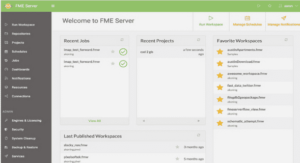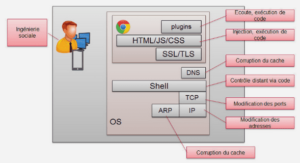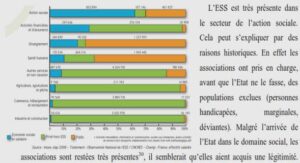Electron beam welding (EBW)
Principles of EBW
EBW is a mature manufacturing technology that has a demonstrated capability of joining thick gauge section materials in a single pass with considerably lower heat input than conventional arc welding processes. The weldment is typified by a high depth to width ratio, narrow FZ and HAZ, low residual stresses and distortion, and high mechanical performance (Meleka, 1971). The schematic of different geometries of a butt joint in different arc welding processes is compared with EBW in Figure 2-1. The EBW is a fusion welding process for joining a broad range of similar and dissimilar materials (Sun et Karppi, 1996) by bombardment of the material surface with high energy electrons. Electrons emitted from a filament or a cathode (usually tungsten) with a low current (e.g. 50–1000 mA), which is attached to a high voltage supply (30–150 kV), are accelerated and focused on the work piece (Meleka, 1971; Pitrou, 1975).
The combination of a filament or an anode, and a bias cup is called the EB gun that is a main part of the EBW system Due to scattering of the electrons at atmospheric environment, the EBW is usually carried out in a vacuum chamber under pressure of 10-5 torr for deep penetration in thick gage sections, however it is possible to use the EBW in medium vacuum (Dugdale, 1975) or non-vacuum systems (Radtke, 1964) when less penetration depth is desired. The application of EBW in a vacuum environment prevents contamination of the molten weld pool from atmospheric elements, as well minimizes diffusion/divergence of the focused EB from scattering and ionisation under atmospheric pressure. In comparison, nonvacuum EBW utilizes essentially similar equipment but beam delivery must be guided from the vacuum environment of the beam generator through a series of separately pumped pressure stages and a plasma window/shield. This then allows projection of the beam onto the work-piece under atmospheric conditions without generating appreciable pressure leakage into the EB generator. However, though the concerns related to the work piece size are mitigated with the employment of a non-vacuum EBW system, these must be weighed against processing shortfalls such as lower penetration depth and shielding gas protection of the molten weld pool. Hence, once the viability of high energy density welding for hydropower turbine materials is ascertained through an understanding of the influence of the processing conditions on the weld performance, the EB system requirements (e.g. power, and welding speed) can be reliably configured with concurrent considerations of workplace health and safety (e.g. radiation and fumes for non-vacuum conditions) (Handbook, 1993; Meleka, 1971; Schultz, 1993). For understanding the effect of different parameters of the EBW for joining thick gage section, the mechanism of EBW shall be explained first.
Deep penetration welding by EBW
EBW is usually used for penetrating thick sections of material and the magnitude of penetration is usually hundreds times more than the penetration of the electron. For instance, electron penetration in solid metal at 150 kV is only 0.06 mm. Therefore, by using a defocused beam, mitigated current and low power density, deep penetration is not possible. To have a deep penetration weld, high power density is required in order to rapidly convert the kinetic energy of the electron to the heat at the impingement location of the EB. After impingement of the EB, the metal surface is melted without considerable conduction of the heat to neighboring regions. By additional heating, the metal vaporizes and the metal vapors release upwards. The reaction forces of the vapor push the molten metal downwards. This process from the EB impingement at metal surface to pushing the molten metal downwards continues up to complete formation of the keyhole.
In order for the keyhole to stay open and let the weld pool flow through the joint, various forces act together including surface tension and vapour pressure (Metzbower, 1993). The effect of the forces and their interaction is a physical process that is explained briefly here. At first, vapours exist at the center of the keyhole; then, if the pressure of the vapour is high enough, the keyhole goes through the material (Lee et al., 2002; Metzbower, 1993; Petrov et al., 1998). The surface tension force is responsible for keeping the keyhole opened and closed which is dependent on the thickness of material and the keyhole diameter. If the thickness of the material is greater than the keyhole diameter, the surface tension will act inwards thus closing the hole. The vapor pressure acts opposite to the surface tension force and goes upwards and towards the wall of the keyhole. When all forces in the keyhole reach stability, the keyhole is closed and the joint is made. In spite of the importance of these forces on the weld soundness, the welding parameters also have a fundamental role for the weld quality and performance as described below (Meleka, 1971).
INTRODUCTION |





